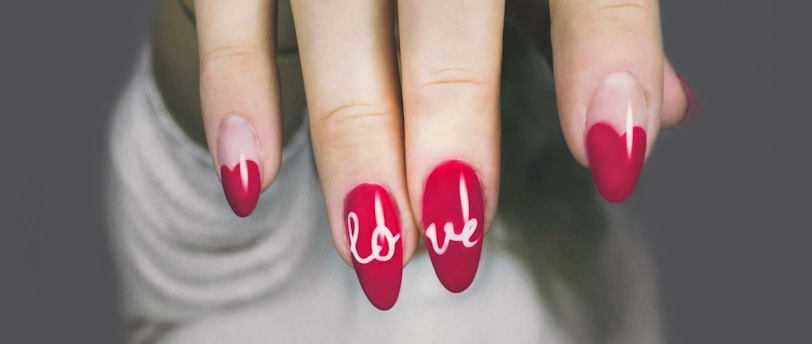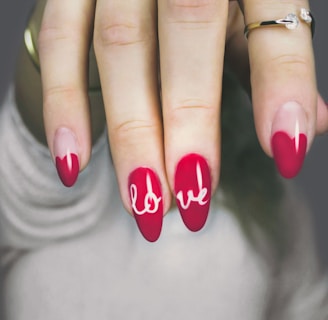The Evolution and Global Prevalence of Nail Art
FASHION & LIFESTYLE
9/28/20233 min read


Nail art has become a popular form of self-expression and creativity, allowing individuals to showcase their personal style through intricate designs and vibrant colors. This article will explore the origins of nail art, its evolution over time, and its prevalence in various regions around the world.
The Origins of Nail Art
The practice of decorating nails can be traced back thousands of years to ancient civilizations such as Egypt, China, and India. In these cultures, nail art was not only a form of adornment but also a symbol of social status and beauty.
In ancient Egypt, both men and women adorned their nails with vibrant colors, using a combination of henna and natural dyes. The colors and designs chosen often indicated one's social class, with the ruling class opting for more intricate and elaborate nail art.
In China, nail art was prevalent during the Ming Dynasty, where noblewomen would paint their nails with a combination of beeswax, egg whites, and flower petals. The colors and designs were often inspired by nature, with red symbolizing good luck and happiness.
In India, the practice of nail art dates back to the Vedic period. Women would decorate their nails with intricate designs using natural henna paste. These designs were often influenced by traditional Indian motifs and symbols, such as peacocks and lotus flowers.
The Evolution of Nail Art
While nail art has a rich history, it wasn't until the late 20th century that it gained widespread popularity. With the advent of modern nail polish formulations and the rise of fashion magazines and beauty salons, nail art became more accessible to the masses.
In the 1970s, the disco era brought about a surge in nail art trends. Metallic colors, glitter, and bold designs were all the rage, reflecting the vibrant and flamboyant spirit of the time.
In the 1980s, celebrities such as Madonna and Cyndi Lauper popularized bold and eccentric nail art designs. Long, acrylic nails adorned with rhinestones, studs, and intricate patterns became a symbol of rebellion and self-expression.
The 1990s saw a shift towards more minimalist nail art designs, with neutral colors and simple patterns becoming popular. This trend was influenced by the rise of grunge fashion and the desire for a more understated aesthetic.
In recent years, nail art has experienced a resurgence in popularity, thanks to social media platforms such as Instagram and Pinterest. Nail artists and enthusiasts from around the world share their creations, inspiring others to experiment with new designs and techniques.
Global Prevalence of Nail Art
Nail art is now prevalent in many regions around the world, with each culture adding its unique touch to this form of self-expression.
Asia
In countries such as Japan and South Korea, nail art has become an integral part of fashion and beauty culture. Intricate designs, 3D embellishments, and nail extensions are common, with nail salons offering a wide range of services to cater to the demand.
In India, traditional henna designs are still popular, with brides often adorning their nails with intricate and elaborate patterns as part of wedding celebrations.
Europe
In Europe, nail art has gained significant popularity, with countries like the United Kingdom, France, and Germany embracing this trend. Nail salons offer a variety of services, from simple nail polish application to intricate hand-painted designs.
In Eastern European countries such as Russia and Ukraine, nail art has become a competitive industry, with nail artists showcasing their skills in international competitions.
Americas
In the United States, nail art has become a mainstream trend, with celebrities and influencers often sporting elaborate designs on red carpets and social media. Nail salons offer a wide range of services, including gel nails, acrylic extensions, and intricate nail art designs.
In Latin American countries such as Brazil and Mexico, nail art is deeply rooted in the culture. Vibrant colors, bold designs, and intricate patterns are common, reflecting the vibrant spirit of these regions.
Africa
In many African countries, nail art has become a form of artistic expression, with women using vibrant colors and bold patterns to showcase their cultural heritage. Traditional African motifs, such as tribal patterns and symbols, are often incorporated into nail art designs.
Nail art has come a long way from its ancient origins to become a global phenomenon. It has evolved over time, reflecting the changing fashion trends and cultural influences. Today, nail art allows individuals from all walks of life to express their creativity and showcase their unique style.
Contacts
asharma@thestylebuzz.com
Subscribe to our newsletter
TheStyleBuzz offers informative content of a general nature. However, it is important to note that this information should not be considered as a substitute for professional medical advice, diagnosis, or treatment. TheStyleBuzz is committed to providing accurate and reliable information, but it is important to use your own discretion and seek professional advice when necessary.
